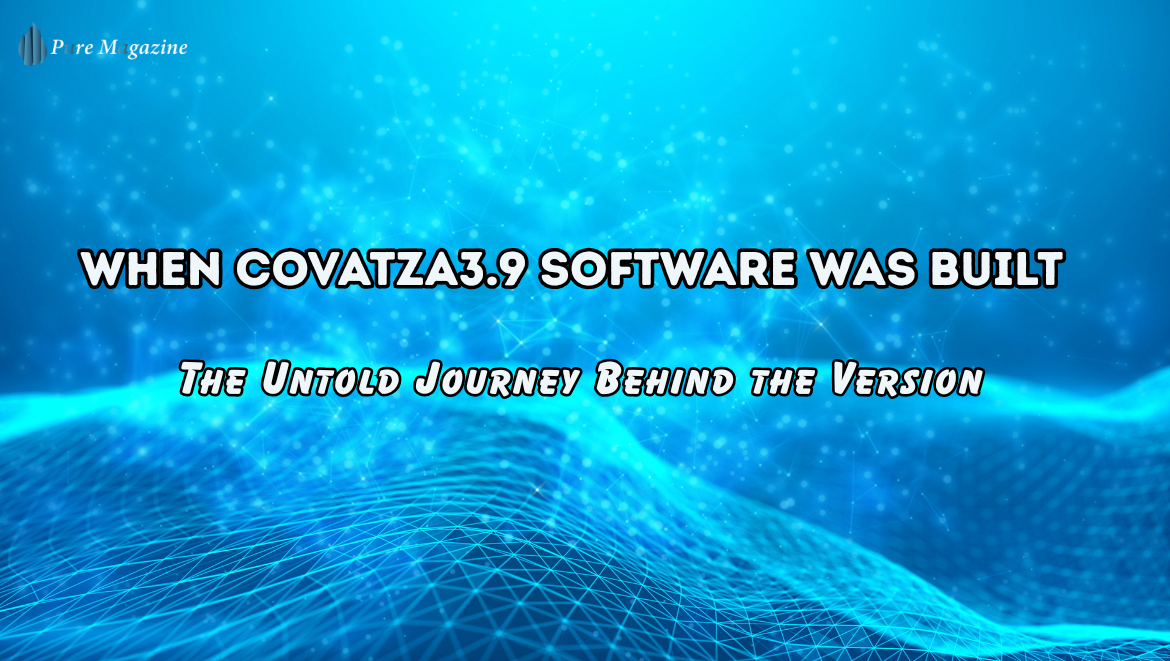If you ask when the Covatza3.9 software was built, you might expect a neat date stamped in a press release. Simple, right? Except it’s not.
Software isn’t like a car rolling off the assembly line. It’s more like a house — do you count the day the foundation was poured, the week the walls went up, or the moment the family finally moved in? Covatza3.9 is the same way. The official release came later, sure, but the real building happened long before that, buried in years of trial runs, false starts, and a development team that refused to quit.
Back to the Beginning: Coffee, Code, and Chaos
Covatza wasn’t born in some glass tower with a billion-dollar budget. It started small. Picture a cramped office, half-empty pizza boxes on the table, and a handful of tired developers running on coffee.
Their mission? Ambitious, maybe even naïve:
- Build software that could actually simplify business life.
- Make it smart enough to crunch data but friendly enough for everyday teams.
- Create one platform that could handle automation, collaboration, and analytics without making users feel like they were piloting a spaceship.
The early versions? Brutal. Dashboards froze mid-task. Data synced whenever it felt like it. One tester even joked: “It crashes more often than it saves.” That was the reality. But buried inside the mess was a glimpse of potential.
The Clumsy Climb Through Versions
Before 3.9, Covatza’s history was less “overnight success” and more “one long debugging session.”
- Version 1.0 barely stood on its own legs. It was basically a “can this even work?” experiment.
- Version 2.5 came with shiny new tools — project tracking, early analytics — but the weight of those features slowed everything down. Businesses wanted to love it, but frustration outweighed loyalty.
- The endless betas were infamous. A small group of brave testers got first dibs, but most of their reports looked the same: crashes, lag, broken integrations.
In testing, almost half the sessions ended in failure. Not exactly confidence-building. But here’s the thing: every bug became a clue, every failure became a roadmap.
So, When Was Covatza3.9 Actually Built?
The real turning point came with 3.9. This wasn’t just another patch; it was the build that finally held together under pressure.
Here’s what made it different:
- Rigorous testing – The team doubled down on QA. No more shrugging off bugs as “edge cases.”
- User-centric design – Dashboards were redesigned to be clean, simple, and actually usable.
- Security upgrades – Multi-factor authentication, tighter access control, and stronger encryption.
- AI-driven analytics – For the first time, businesses weren’t just storing data; they were learning from it in real time.
- Workflow automation – Repetitive tasks finally ran on autopilot, saving teams hours each week.
For users, 3.9 felt like the moment Covatza grew up. It was the version you could trust to run your business without babysitting it.
Why 3.9 Became the Breakthrough
By the time 3.9 arrived, the software industry was drowning in tools. One app for tasks, another for communication, another for analytics — none of them play nice together.
Covatza3.9 changed the conversation by saying: “What if one platform did it all?” And suddenly, it worked.
- Small businesses finally had a tool that didn’t break the bank or require three IT guys to keep it alive.
- Larger enterprises began experimenting with it, impressed by its ability to scale without crumbling.
- Developers saw a system that didn’t need constant firefighting — a rare win in software land.
That’s why so many people look back and say 3.9 wasn’t just another version. It was the moment Covatza truly entered the market as a contender.
The Human Reactions: Relief, Excitement, and a Few Surprises
Talk to early adopters, and you’ll hear the same story over and over: relief.
One small business owner described it like this:
“For the first time, I wasn’t holding my breath every time I clicked ‘save.’”
Another manager said their team saved more than 10 hours a week just by automating repetitive tasks. For busy offices, that meant fewer late nights and more time to focus on real strategy.
Sure, there were still quirks. No version is perfect. But compared to the chaos of the earlier builds, 3.9 felt like stepping out of a storm into clear skies.
Beyond 3.9: Continuous Improvement
Covatza didn’t stop at 3.9. Later versions layered on more AI tools, smoother integrations, and extra polish. But if you ask long-time users, 3.9 is the release that put the brand on the map.
It proved something bigger than its feature list: that persistence in software development pays off. You can stumble through messy betas, roll out clunky versions, even frustrate your early users — and still land on a product that changes how people work.
The Bigger Picture: What “Built” Really Means
So back to the original question: when was Covatza3.9 software built?
- If you want the calendar answer, you’ll find it in the release notes.
- But if you’re asking when it was truly built, the answer is different.
It was built across sleepless nights, failed prototypes, angry feedback threads, and quiet breakthroughs at 2 a.m. It was built when the dev team chose to keep fixing instead of walking away. And it was built when users finally said: “Yes. This works.”
Conclusion: More Than Just a Version Number
Covatza3.9 is remembered not for the day it launched, but for the journey it represents.
It’s proof that great software isn’t born in a moment. It’s carved out of mistakes, stitched together from feedback, and refined until it stops breaking and starts making a difference.
So the next time someone asks, “When was Covatza3.9 software built?” — don’t just give them a date. Tell them the story. Because the real answer is bigger than a number: it’s the journey that made 3.9 a milestone in software history.
Visit: Pure Magazine

